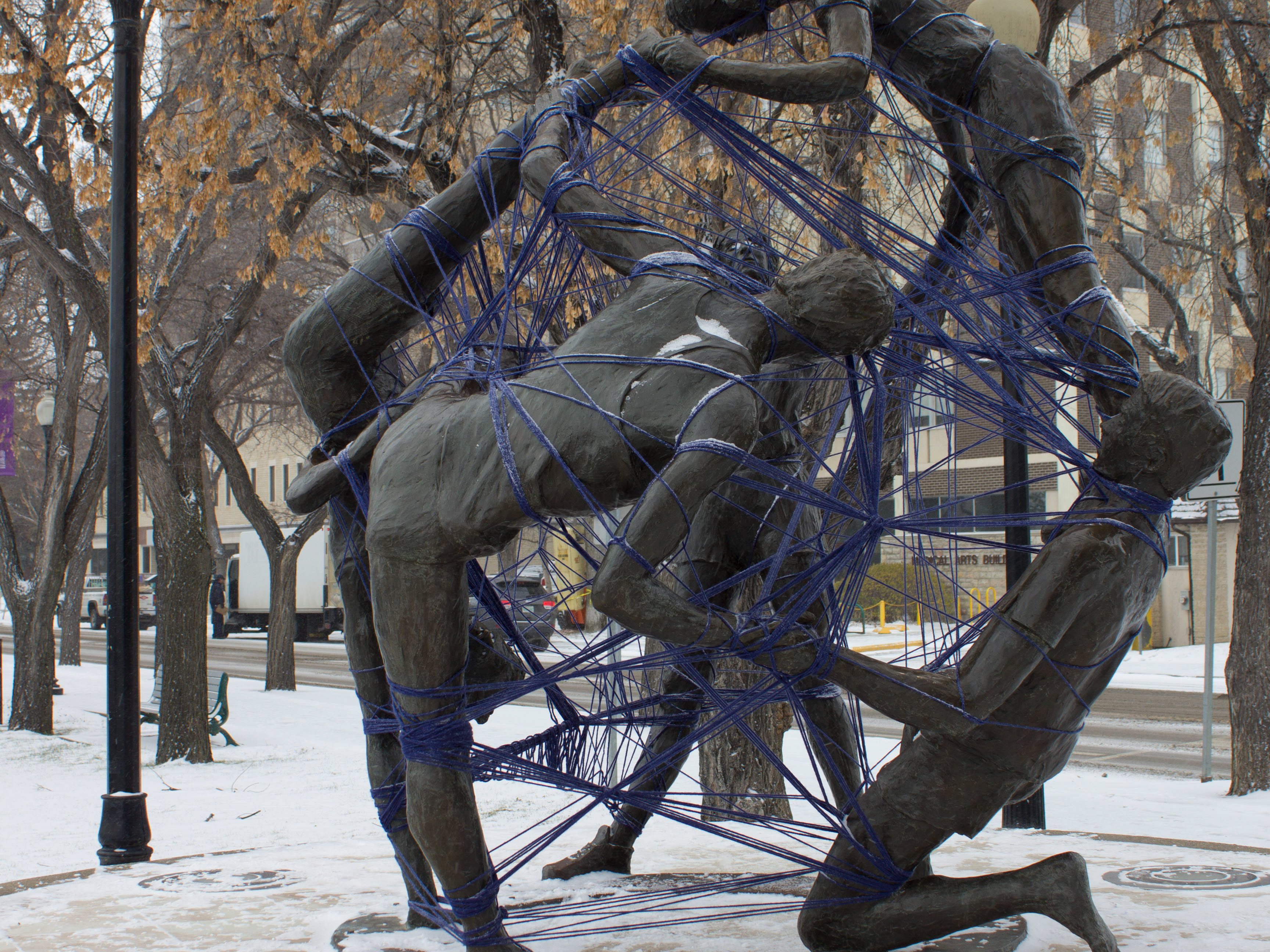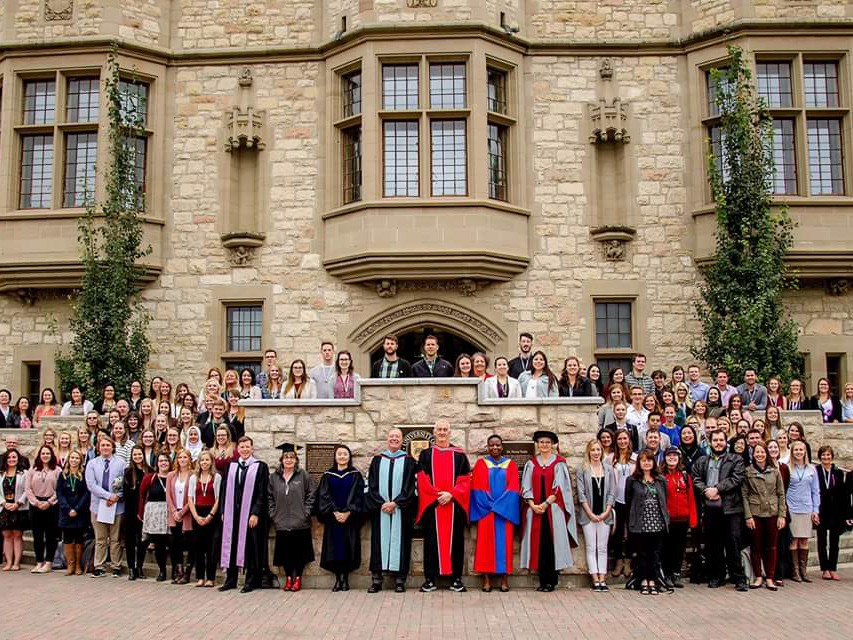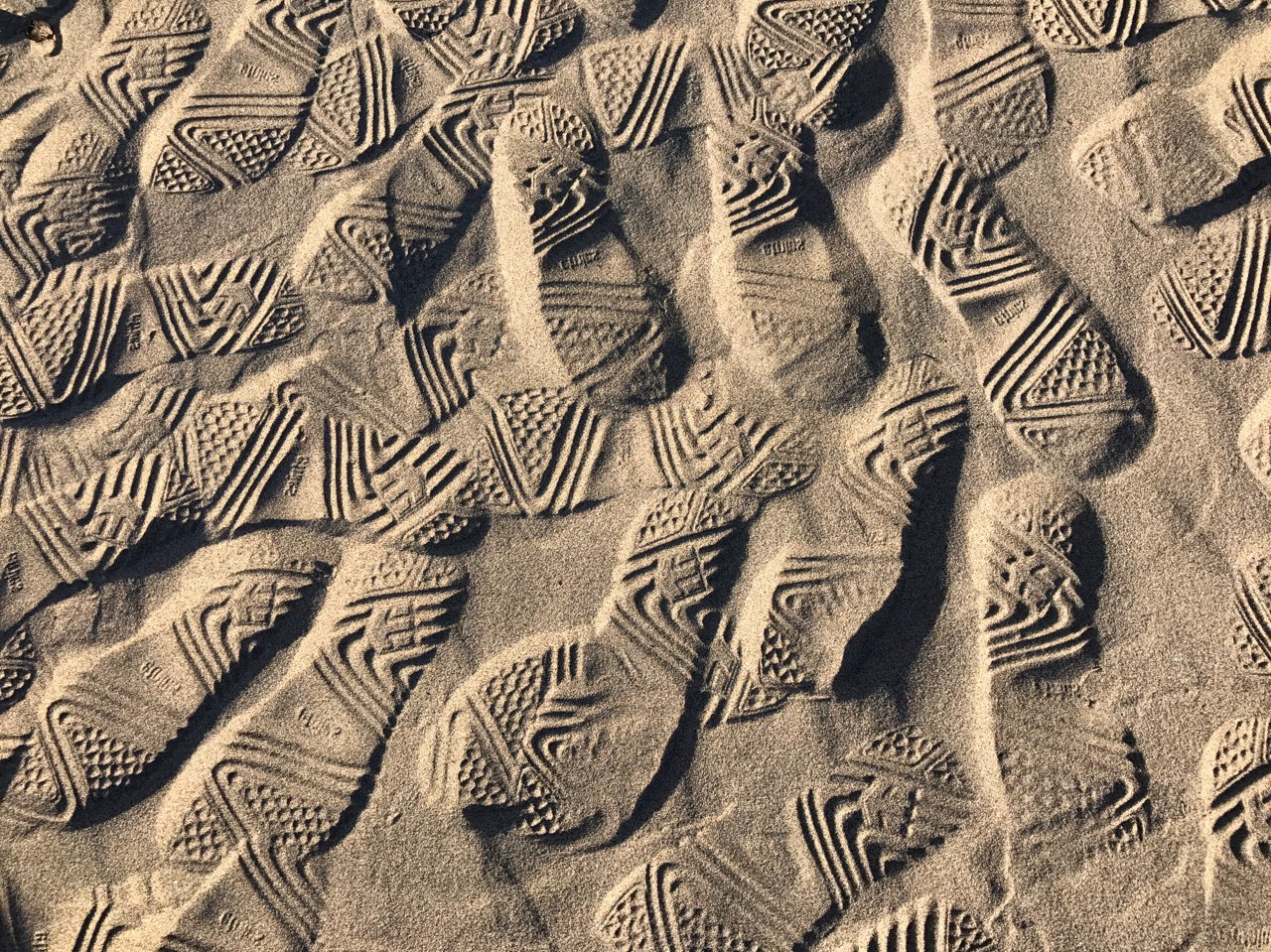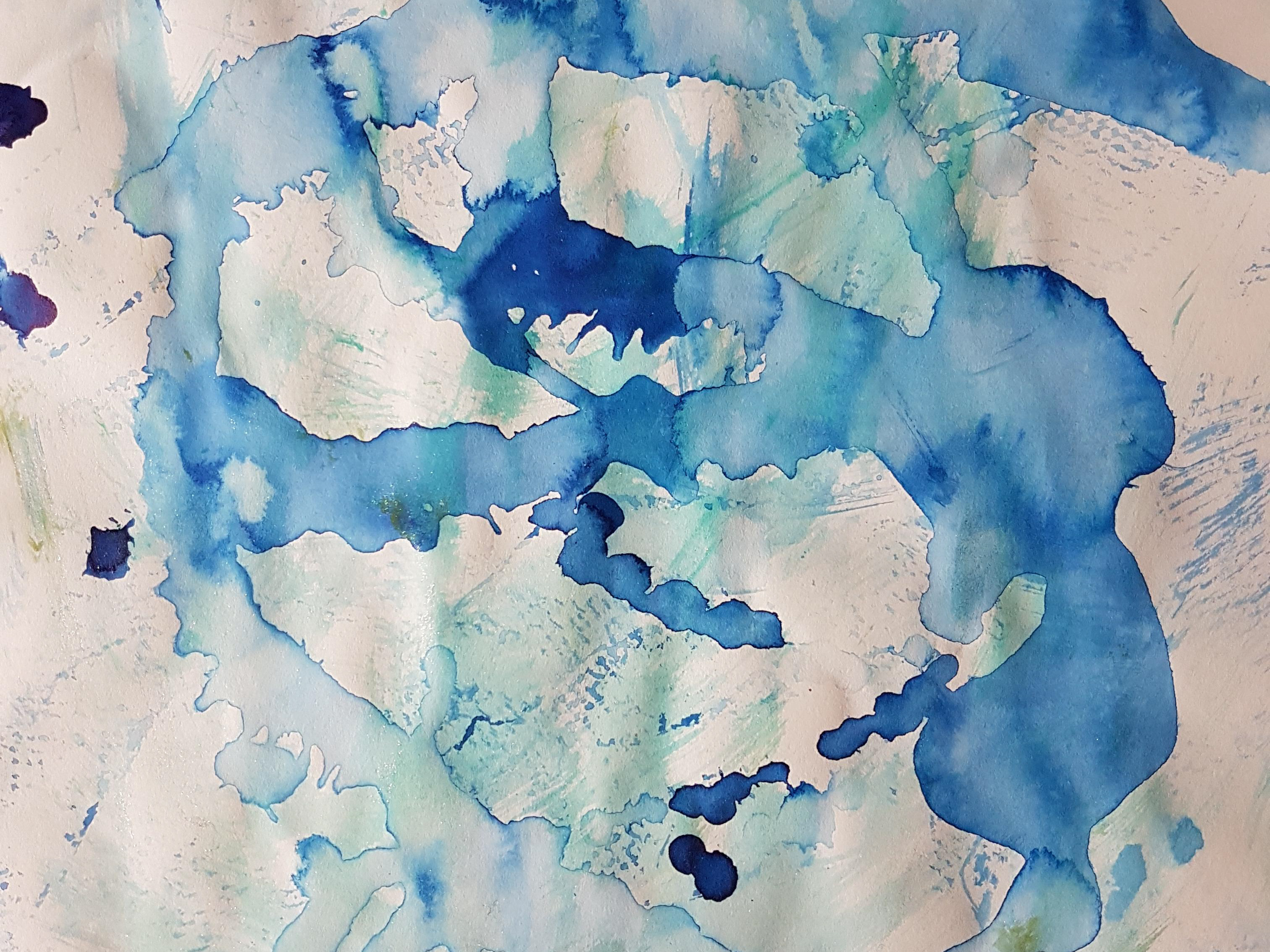This reflective writing comes from an Educational Psychology class that I took. The writings reflect my journey as a literacy teacher in my specific areas. I believe in all forms of literacy and strive to focus on literacy every time i work with my students.
Journal #1 – Week one
My literacy teacher identity relates to visual literacy. I look at literacy in art and in a visual way. I feel that my literacy teacher identity stems from my strong artistic background. I have spent the last four years studying art and working towards my Bachelor of Fine Arts Honors Degree. After the last four years here at the U of S, plus the years I spent in high school and elementary school focused on art I feel very confident in my teaching area and in the art world. Along with studying art I have been working and practicing as an artist for the last seven years (semi-professionally and professionally). I feel that because of my strong artistic background I will be able to teach literacy effectively and include it in all my lessons and assignments. Having the skill and knowledge to teach an area gives me an advantage when it comes to lesson planning because I don’t have to spend as much time focused on content as I normally would, therefore I can turn my attention to other things like how to incorporate literacy into the subject area and lesson (teaching an interdisciplinary course). One thing that I know will be difficult when teaching high school students is the level of discourse that is expected in the classroom. Art language can be very daunting and confusing. The discourse/language can often be deemed “over the top” and unnecessary because when talking about art we frequently use a lot of random jargon to make ourselves sound more intelligent and quite honestly to impress others by showing them that we understand what we are viewing and talking about (although being able to understand art entirely is not possible). Art is very much based on interpretation from the viewer and the artist. Which means that just because an artist created a piece of work with a specific theme or concept in mind does not mean that the viewer will see it that way. Art is very subjective and complicated because it can be talked about and viewed in a multitude of diverse ways and there really is no “correct” answer. I believe that my role as a high school art teacher is to help children effectively learn about art and art history within each art form we choose to create with. I hope to give my students a platform on which they can comfortably and effectively be creative, successful, and happy as they learn new and exciting skills. Every art based skill that a child learns can easily be translated into another area of teaching, which is what a lot of people forget when they think about the art world and art curriculum. Art tends to be looked at as a lesser form of communication and learning because it isn’t perceived as a necessary skill (or difficult skill) like math or science is. As a teacher I hope to spend my entire career dedicated to breaking the stereotypes of art and artists within the school system so that I can inspire my students to see art in a different light.
Reflection
After going back and reading my week one entry I find it really exciting to see how I have already begun implementing my teaching ideas within the realm of art into the classes that I am student teaching in. In both the photo and graphic art classes that I help teach on a regular basis I am already seeing how I can implement art history ideas and learning into each lesson and I have begun to do this.
Journal #2 – Week two
Literacy can relate to a lot of different things in a lot of different areas, it is no longer classified as the ability to read and write because it has developed a great deal beyond that. Literacy can relate to any topic in any subject and can be thought about it a variety of ways, hearing, speaking, viewing, representing, reading, writing, technology, and EAL (English as an additional language. In the art world we look at literacy through almost every single one of the ways listed above, but most specifically we see literacy in a visual way. Visual literacy is most often referred to as the ability to make meaning from information by interpreting and negotiating when viewing an image. When we take this idea of visual literacy and apply it to the art curriculum it is very easy to see how we would/could incorporate it into a lesson. Before and during a lesson on any subject or type of art I would go back and look at a brief history of that art form. For example, if I was to teach a lesson about drawing and learning how to draw (at a very basic/introductory level) the first thing I would do is have the students look back at famous artists in history who predominantly drew and sketched. I would also have the students consider the history of how drawing started, what are the differences from today’s style of drawing and the original way drawing commenced. On top of that I would have them look at why we draw and what made people start drawing initially. While looking at all this information briefly students would encounter several different images from different artists and be exposed to historical drawings. These images would help them understand the questions that were asked, and their visual literacy would help them identify the images. I feel that because I have art history knowledge already it would make it a lot easier for me to teach literacy when looking at historical images of different art forms. I would be able to talk to the students about how to understand, interpret, and identify an image. This would increase their level of visual literacy and provide them with important skills, so they can effectively develop of forms of literacy and continue cross-curricular learning.
Reflection
When I looked back on my journal entry from week two I saw several things that I found to be important and interesting. It makes me very happy to see that I have been able to effectively translate my thoughts and ideas on literacy (specifically visual literacy) into a practical use in the classrooms that I am currently student teaching in. I have taught a few lessons in the grade eleven and twelve photography classes already and I have taken my ideas about visual literacy and put them into my lessons. I have worked with the students on how to effectively and properly critique peer artwork as well as professional artwork beyond the point of “I like that”, “I think it’s pretty”, “it looks cool”, and so on. The students are now critiquing each other’s work (and professional work) on a different level because of their ability to use their visual literacy skills (by interpreting and understanding). They have gone from those basic thoughts to talking about the technical elements of a photograph, the elements of design, and the principles of design every time they look at an image. Not only has the students level of visual literacy grown but other forms of literacy have also grow. Their level of discourse is much higher and their ability to speak confidently and effectively has also grown. It is a fantastic feeling to see the impact of developing literacy has had on these students.
Journal #3 – Week three
In my subject area the specific literacy skills that I want my students to develop are, visual literacy skills (such as interpreting and viewing), language skills, digital literacy, technology skills, and representing skills. I believe that each area of literacy is greatly important, but these are the specific areas that relate to art the most. Visual literacy is very specific to art because we use it as a skill to interpret and understand images while we view them. Visual literacy allows us to be able to talk about any visual representation of art from image to sculpture (2D to 3D). Language in literacy is another very important part of being able to understand art because with the art language or discourse we would not be able to talk about the visual artwork. In the art world the language is very specifically tied to being able to talk about the artwork. For example, if I was to put up a photographic image in a photography class and ask my students to talk about it most of their responses would be something along the lines of, “I like it”, “it looks nice”, “it’s pretty”. Until we teach students how to talk about art and give them the language to do it they do not have the ability to do it correctly. One of the first and most important things to teach students that relates to language in the art world are the principles and elements of design. After a student has a basic understanding of the principles and elements of design they are about to talk about an image in a technical and none-technical way. Their level of discourse will be able to go from saying “I like it” to something like “I like it because their use of line and repetition in the image makes it visually interesting”. There are multiple ways in which to teach the principles and elements of design but the easiest would be to show strong visual images that represent each of the principles and elements. Another remarkable thing about the art world is that there is ample opportunity for cross-curricular learning within every lesson. When discussing art forms one of the most important things to do is look at the historical context of that style of art. We need to look at historical artists, so we can understand why we are doing today what we are doing and who did these things before us. We must provide our students with context of the past, so they can understand what is happening in the present, so the students think of themselves as historians and artists. In an art classroom when we talk about mixing paint together, colour theory, mixing chemicals and other things we are asking our students to think of themselves as scientists and as artists. There are many examples of how cross-curricular learning happens in the art classroom.
Reflection
After re-reading my journal from week three I’ve continued to notice a pattern in my thoughts on literacy and developing literacy in the art classroom. I feel very strongly about developing literacy in many ways in the art classroom because It is my hope that this will help others start to realize the value of art and the importance of it. I also notice how strongly I feel about cross-curricular development and incorporating other subject areas into art. Developing visual literacy and language skills are two of the most important parts of literacy in the art world in my opinion.
Journal #4 – Week four
I feel that student’s literacy levels in the classroom and lower than I expected. A lot of students don’t have the level of understanding that I believed that they would have. I feel that they don’t have reading skills, writing skills, listening skills, speaking skills, viewing skills that I believed that would have. There have been many instances during my student teaching where I have directly seen students using these literacy skills at much lower levels than expected. An example of this is in my computer science twenty and thirty class where I have had at least ten students ask me what the difference between the greater than and less than signs. This has happened on more than one occasion; multiple days I have been there in different weeks and I don’t understand how the students at that age and level still do not understand the difference between the two signs. My partner teacher responds to these types of different literacy problems in a variety of ways. Depending on how many students are struggling he will address the class as a large group and help them figure out the problem together or if it is a small group of students struggling he will go and address each student individually. With the problems that arise from listening skills my partner uses repetition to hopefully drill the ideas into the student’s heads. When teaching a demo, he will say what he is doing three or four times or go over the same couple of steps three or four times in the hopes that the students listen and understand. Often, I have noticed that It is the students not wanting to pay attention to the demo or lecture and then it is up to the teacher to bring them back in and engage them. I do think that student’s ability to focus is very limited and short because of how much constant stimulation that they get from technology in their lives which limits their ability to focus during class.
Reflections
Looking back at my journal entry from this week I have found that my literacy teacher identity is still the same as it was the first week and I’m finding that very interesting. I think a lot of what I am seeing in my student teaching relates very well to what we have been talking about in class and I find it very rewarding to implement my ideas into the classroom. The low levels of literacy concern me a lot because I want students to succeed and if at a grade eleven or twelve level they have low levels of literacy in each area they will be unable to succeed in a post-secondary institute.
Journal #5 – Week five
This week we looked at how our theory or theories of language learning influence our teaching choices and practices. To do this and figure out what the theories we value are we watched a video called A brief overview of 4 learning theories by Jo Harris, so we can learn about which theory(ies) we value within our teaching style. The four different areas of learning theories are: behaviorism, cognitivism, constructivism, and connectivism. Teachers can use/value more than one learning theory with their students because each student is not going to be able to fall into the same learning theory all the time. Sometimes It may take one theory to help half of the class learn effectively and another theory for the other half of the class. One of the theories that I relate to and want to use in my classroom is cognitivism. Cognitivism theory is looking at a three-stage processing system of sensory memory, working memory, and long-term memory. It is based off the work by Piaget on how students learn through mental processing. I think I will use this type of learning theory because you want to change the way the student is thinking so they start to become a better learner. The other learning theory that I feel I relate to as a teacher is the social constructivism theory. I feel that in an art classroom (especially) students should (and need to) be able to work independently (thinking for themselves and creating their own ideas) and in a social group setting as well (learning to work collaboratively). We learn about social constructivism through L. Vytogsky’s (who is known for the Zone of Proximal Development) and J. Bruner’s work. In this style of learning theory, the teacher is mostly there to give the students discussion questions and facilitate the conversation rather than giving a lecture. In the art classroom this is especially important for students as they learn to critically critique not only their own work but also the work of their peers and professional artists. To have a proper critique (or facilitate one) students need to be speaking as a group and discussing the work together rather than looking at it individually.
Reflection
As I look back on my journal entry from this week I notice how I have taken the two learning theories that I wrote about and applied them (a little bit) to my classes at my student placement. I am impressed with myself that I am trying to use techniques like this already in the classroom when I have been taught very little about these theories and how to properly implement them in a classroom. I feel that I have probably been the most successful with the social constructivism learning theory because it relates so well to art and I can use that method of learning style in my class critiques. I have had the opportunity to lead three class critiques now and I feel that I have done a decent job of being a facilitator and getting the students to speak up and discuss the work. It was very interesting to me to first talk about why we have critiques and how we critique and then finally get to lead a few class critiques. They ended up being successful and I think the students appreciated my input and knowledge.
Journal #6 – Week 6
When I think about my relationship to FNIM and EAL teaching I feel that I have a basic knowledge and understanding to teach my students in a diverse and culturally appropriate way. Where I do feel that I lack information is with specific details and a deeper understanding and knowledge of FNIM and EAL content and material. I do not think that I could appropriately give a lesson on FNIM and or EAL material alone (depending on what specifically I am talking about) and the I would most likely need to bring someone who has a better understanding then I about these areas. I will do my best to be a diversified teacher and incorporate both FNIM and EAL content into my classroom, but I will need someone to come and help me do this properly. Within the realm of art in the art classroom I struggle to see how I could incorporate culturally appropriate art making into my curriculum without it being thought of as inappropriate by recreating indigenous (or other cultures) art. Again, I feel that this is the type of conversation I would need to have with someone else to get proper permission to do things and to know how to do them correctly. When we talk about art history in the classroom I could see how this would easily relate to that curriculum and I feel that I wouldn’t have a lot of trouble incorporating it effectively and appropriately. Rather than just looking at historical European works of art I could incorporate a lot of other cultures art and history. I am fully aware of the missing information about EAL and FNIM content with regards to the art curriculum especially when we talk about the history of art to students. The information given to students about the history of art is still predominantly a white European history. Art history is something that is lacking in the high school curriculum to begin with so, when it does become more integrated with the art classes (and other subjects) I hope it includes EAL and FNIM content.
Reflection
When I am re-reading this journal entry there is not a lot to reflect on. Unfortunately, the subjects that I have been placed in in my student teaching have little to no information about including EAL or FNIM information within the subject because they are extremely technical based. Computer science, drafting, graphic arts, and photography do not have a curriculum that easily aligns with FNIM or EAL content and I have not talked with my partner teacher about the inclusion of FNIM and EAL content within his courses. With these courses I wouldn’t even know where to begin to figure out a way to include FNIM or EAL content into the class. In this instance I feel that I would need to consult someone who has a better background in these subject areas plus in FNIM and EAL content to find out if there would be a way to effectively incorporate these into the subject. I am wondering though if there might not be?? What we are teaching the students is a specific set of technical skills to use on a specific technical program.
Summary
To summarize the entire six weeks of journal entries into one paragraph I would say that I feel I have been learning a lot. I feel especially proud of myself for how much I have accomplished within my classes at the school I’ve been placed at for student teaching. These are the things I constantly think about doing and using and I now finally have a platform where I can implement my own ideas into the classes I am a part of. I feel that I have grown a lot in these past six weeks although it hasn’t really been that long of a time for me to grow so much. Being in a school setting and feeling like an actual teacher has significantly helped me grow and feel like what I want to teach is possible in the way I think it should be taught. My ideas and thoughts on teaching have not changed very much but I don’t think that that is a bad thing, I feel like I am solidifying my ideas and beliefs even further rather than creating new ones.





